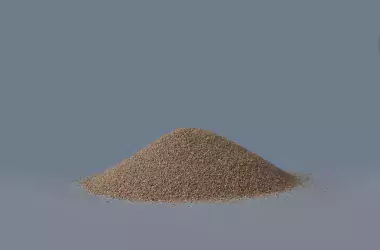Aggregates

What are Aggregates?
Aggregates are a granular material used extensively in construction. The most common natural aggregates of mineral origin are sand, gravel, and crushed rock, such as limestone (with less than 95% CaCO3).
These materials are essential components in concrete, asphalt, and other building materials. Several of Lhoist’s sites provide crushed stone and stone products to meet the needs of the construction and infrastructure industries.
Applications of Aggregates
Aggregates have a wide range of applications in the construction industry, including:
- Road construction: Used in the base layers of roads and highways to provide a stable foundation.
- Concrete production: Aggregates are a key component in concrete, providing strength and stability to the mixture.
- Landscaping: Decorative aggregates are used in gardens, pathways, and water features.
- Drainage systems: Gravel is commonly used in drainage systems to prevent water accumulation.
- Foundations and bases: Crushed stone is used for building foundations and road base materials to support heavy loads.
- Specialized uses: Lightweight aggregates are used for insulation and soundproofing, while heavyweight aggregates are used in industrial applications.
Properties of Aggregates
- Appearance: Vary in color, shape, and texture. They can be angular, rounded, or irregular, which affects their binding properties.
- Chemical formula: The chemical composition of aggregates depends on their mineral origin. For example, limestone aggregates primarily consist of calcium carbonate (CaCO3).
- Melting point: Values can vary based on the specific mineral composition and impurities present in the aggregates.
- Density: Varies between 2.4 and 2.9 g/cm³, influenced by their specific type and composition.
- Solubility: Generally insoluble in water, which makes them stable and durable in various environmental conditions.
Frequently Asked Questions (FAQs)
How are aggregates classified based on their size?
Aggregates are classified into two main categories: fine aggregates and coarse aggregates. Fine aggregates include particles smaller than 4.75 mm, such as sand, while coarse aggregates include particles larger than 4.75 mm, such as gravel and crushed stone. This classification helps determine their suitability for specific applications like concrete or asphalt production.
What is the significance of aggregate shape in construction?
The shape of aggregates (angular, rounded, or irregular) affects the workability and strength of concrete or asphalt. Angular aggregates provide better interlocking and strength in concrete, making them ideal for high-load applications. Rounded aggregates, on the other hand, are easier to work with and are often used in decorative applications.
How does the mineral composition of aggregates influence their performance?
The mineral composition determines key properties like strength, durability, and resistance to weathering. For example, limestone aggregates, rich in calcium carbonate, are durable and versatile but may react with acidic environments. Granite aggregates, on the other hand, are highly resistant to chemical and physical wear, making them suitable for harsh conditions.
What role do aggregates play in sustainable construction practices?
Aggregates contribute to sustainable construction by incorporating recycled materials, such as crushed concrete and reclaimed asphalt. These recycled aggregates reduce the demand for natural resources, lower waste, and minimize the environmental impact of construction projects. Additionally, aggregates can improve energy efficiency when used in thermally insulating lightweight concrete.
What are recycled aggregates, and what are their benefits in construction?
Recycled aggregates are materials obtained from the processing of construction and demolition waste, such as crushed concrete, reclaimed asphalt, and bricks.
Benefits:
- Environmental sustainability: Reduces the need for natural resource extraction and minimizes waste sent to landfills.
- Cost-effectiveness: Often less expensive than natural aggregates due to reduced transportation and material costs.
- Versatility: Suitable for a variety of applications, such as road base layers, concrete production, and landscaping.
- Energy efficiency: Their use lowers the overall carbon footprint of construction projects.